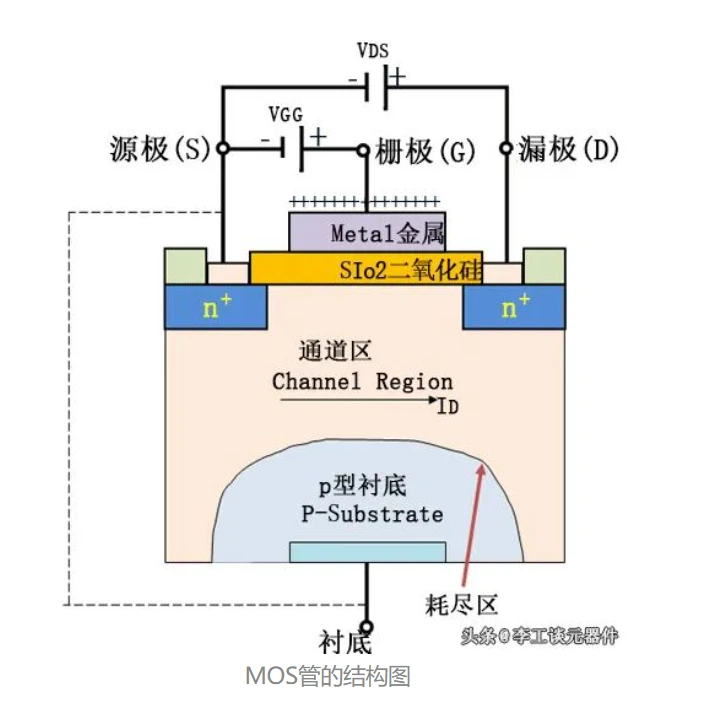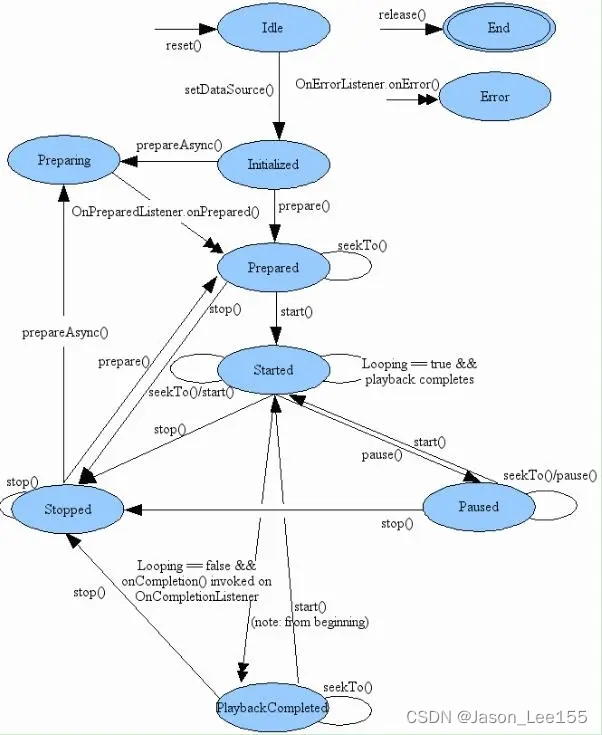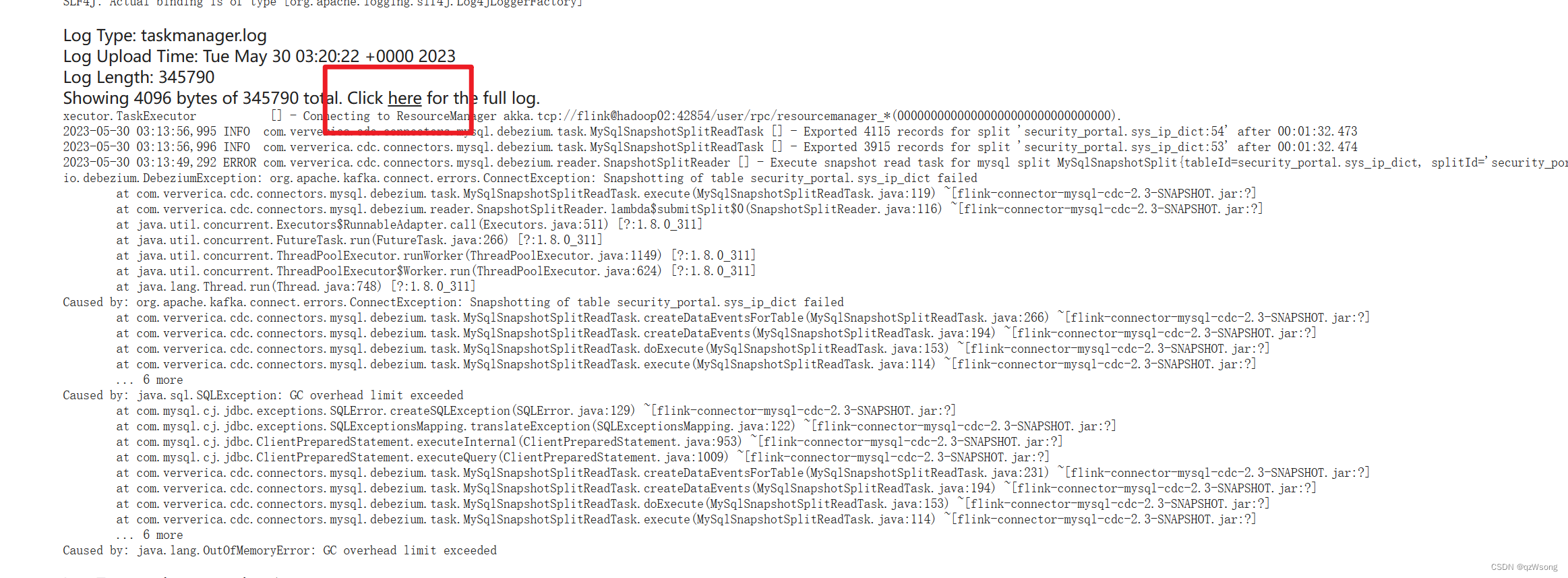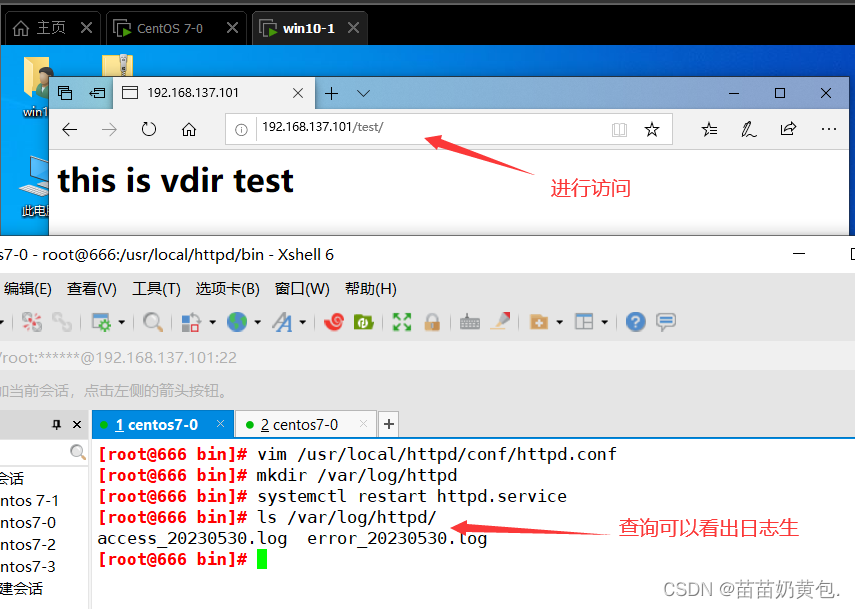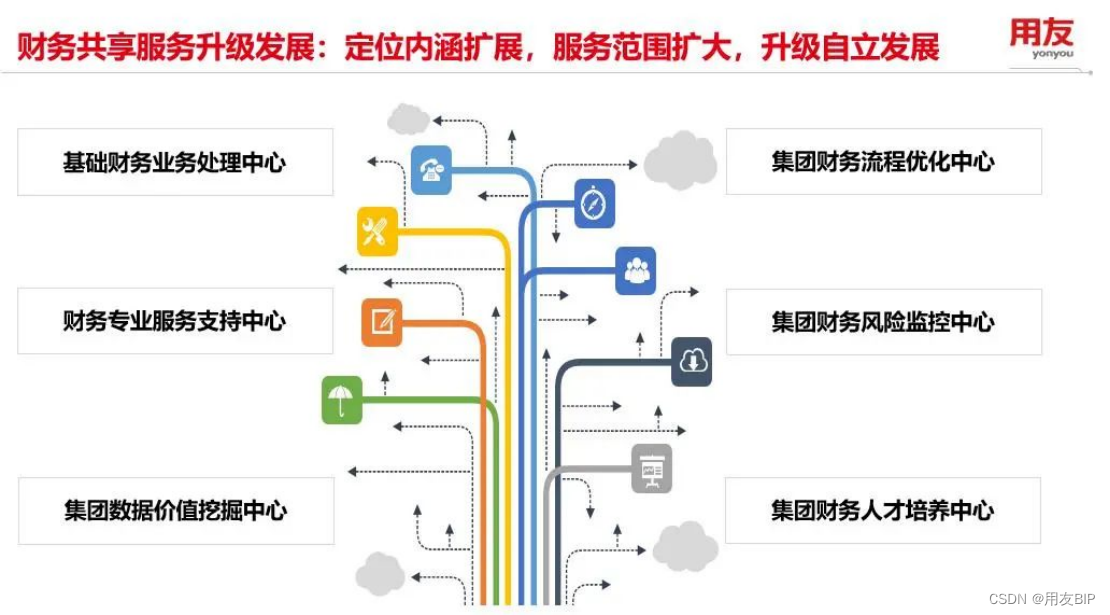vue3组件通信方式有以下几种:porps,$emit, bus,v-model,useAttrs,$ref/$parent,provide/inject,pinia,slot。下面将逐一讲解。
目录
1.porps:实现父子组件通信,子组件接收的数据还是只读
2.$emit
3.全局事件总线 $bus,使用mitt
4.v-model传值
5. useAttrs:获取组件标签身上属性与事件
6.$ref/$parent
7.provide/inject
8.pinia :vuex:集中管理状态容器,可以实现任意组件之间的通信
9.slot 插槽分为默认插槽、具名插槽、作用域插槽(可以传递数据的插槽,子组件可以将数据回传给父组件的插槽)
1.porps:实现父子组件通信,子组件接收的数据还是只读
父组件中,引入子组件并给子组件绑定一个money参数
<template>
<div id="app">
<h1>父组件</h1>
<h3>富一代资产{{ money }}元</h3>
<index1 :money="money"></index1>
</div>
</template>
<script lang="ts" setup>
import index1 from './view/index.vue'
import { ref } from 'vue'
let money = ref(1000000000000)
</script>
<style scoped>
#app {
width: 100vw;
height: 100vh;
color: #000;
padding: 50px;
box-sizing: border-box;
}
</style>
子组件中,使用defineProps接收,在template中,可以直接使用money,
<template>
<div class="index1">
<h1>子组件1</h1>
<h3>儿子不知道父亲有{{ porps.money }}元</h3>
<h3>
儿子知道了会争这{{ money }}元(template中可以直接省略porps---script中无法省略!)
</h3>
</div>
</template>
<script setup lang="ts">
import { ref } from 'vue'
// porps:实现父子组件通信,props数据还是只读
// 组合式api 使用 defineProps 接收父子组件传递过来的数据,可以是数组也可以是对象,
//不需要引入 template中可直接使用
const porps = defineProps(['money'])
console.log(porps)
</script>
<style lang="scss" scoped>
.index1 {
background-color: azure;
padding: 12px;
}
</style>示例
2.$emit
说到$emit就要说一下自定义事件,在vue框架中事件分为两种:一种是原生的DOM事件,另外一种自定义事件。原生DOM事件可以让用户与网页进行交互,比如click、dbdlick、change、mouseenter、mouseleave...自定义事件可以实现子组件给父组件传递数据。vue2中的@click绑定的是自定义事件 ,可以通过.native修饰符变为原生DOM事件 。vue3中绑定的是原生事件,利用defineEmits方法返回函数触发自定义事件,不需要引入,直接使用。
父组件
<template>
<div id="app">
<h1>父组件</h1>
<h3>富一代资产{{ money }}元</h3>
<index1 :money="money" @xxx="handlerXXX"></index1>
<h3>{{ son }}</h3>
</div>
</template>
<script lang="ts" setup>
import index1 from './view/index.vue'
import { ref } from 'vue'
let money = ref(1000000000000)
let son = ref('')
const handlerXXX = (value: string) => {
son.value = value
}
</script>
<style scoped>
#app {
width: 100vw;
height: 100vh;
color: #000;
padding: 50px;
box-sizing: border-box;
}
</style>
子组件
<template>
<div class="index1">
<h1>子组件1</h1>
<h3>儿子不知道父亲有{{ porps.money }}元</h3>
<h3>
儿子知道了会争这{{ money }}元(template中可以直接省略porps---script中无法省略!)
</h3>
<p>
vue2中 @click是自定义事件,可以通过.native修饰符变为原生DOM事件。
在vue3中@click是原生DOM事件
</p>
<el-button @click="handlerClick">自定义事件</el-button>
</div>
</template>
<script setup lang="ts">
import { ref } from 'vue'
//------porps-------
// porps:实现父子组件通信,props数据还是只读
// 组合式api 使用 defineProps 接收父子组件传递过来的数据,可以是数组也可以是对象,
//不需要引入 template中可直接使用
const porps = defineProps(['money'])
console.log(porps)
//------$emit-------
//defineEmits方法返回函数出发自定义事件,不需要引入 直接使用
const $emit = defineEmits(['xxx'])
const handlerClick = () => {
console.log('触发自定义事件')
$emit('xxx', '富二代上交9999元给富一代')
}
</script>
<style lang="scss" scoped>
.index1 {
background-color: azure;
padding: 12px;
}
</style>示例:
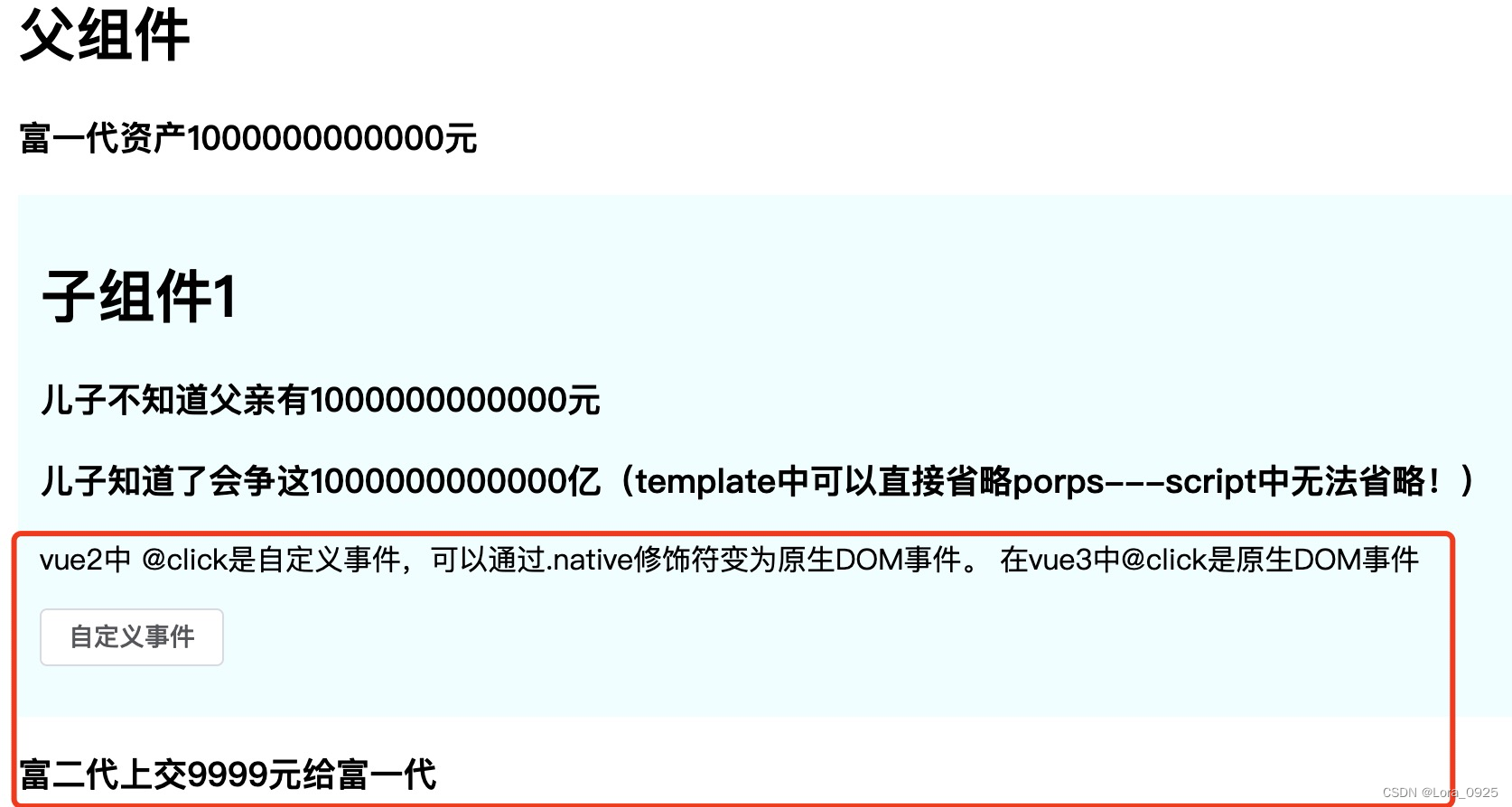
3.全局事件总线 $bus,使用mitt
Mitt是一个小巧的JavaScript发布-订阅库,用于在应用程序中实现事件监听和触发。
安装:npm install mitt -S
在src目录下新建bus文件夹,bus文件夹下新建index.ts

// 引入mitt插件 index.ts
import mitt from "mitt"
const $bus = mitt();
export default $bus 接收组件:引入上面新建的bus,$bus.on 接收将来兄弟组件传递的数据
<template>
<div class="index1">
<h1>子组件1</h1>
<p>收到{{ car }}</p>
</div>
</template>
<script setup lang="ts">
import { ref ,onMounted} from 'vue'
// 事件总线 引入$bus
import $bus from '@/bus'
let car = ref('')
// 组件挂载完毕后,当前组件绑定一个事件,接收将来兄弟组件传递的数据
onMounted(() => {
$bus.on('car', (value: string) => {
car.value = value
})
})
</script>
<style lang="scss" scoped>
.index1 {
background-color: azure;
padding: 12px;
}
</style>发送组件:$bus.emit 使用发送
<template>
<div class="index2">
<h1>子组件2</h1>
<h3>富二代的亲弟钱包有999999元</h3>
<el-button @click="handler">点击送富二代哥哥法拉利跑车一台</el-button>
</div>
</template>
<script setup lang="ts">
import $bus from '@/bus'
const handler = () => {
$bus.emit('car', '弟弟送哥哥的法拉利跑车一台')
}
</script>
<style lang="scss" scoped>
.index2 {
background-color: antiquewhite;
padding: 12px;
margin: 12px 0;
}
</style>
示例:
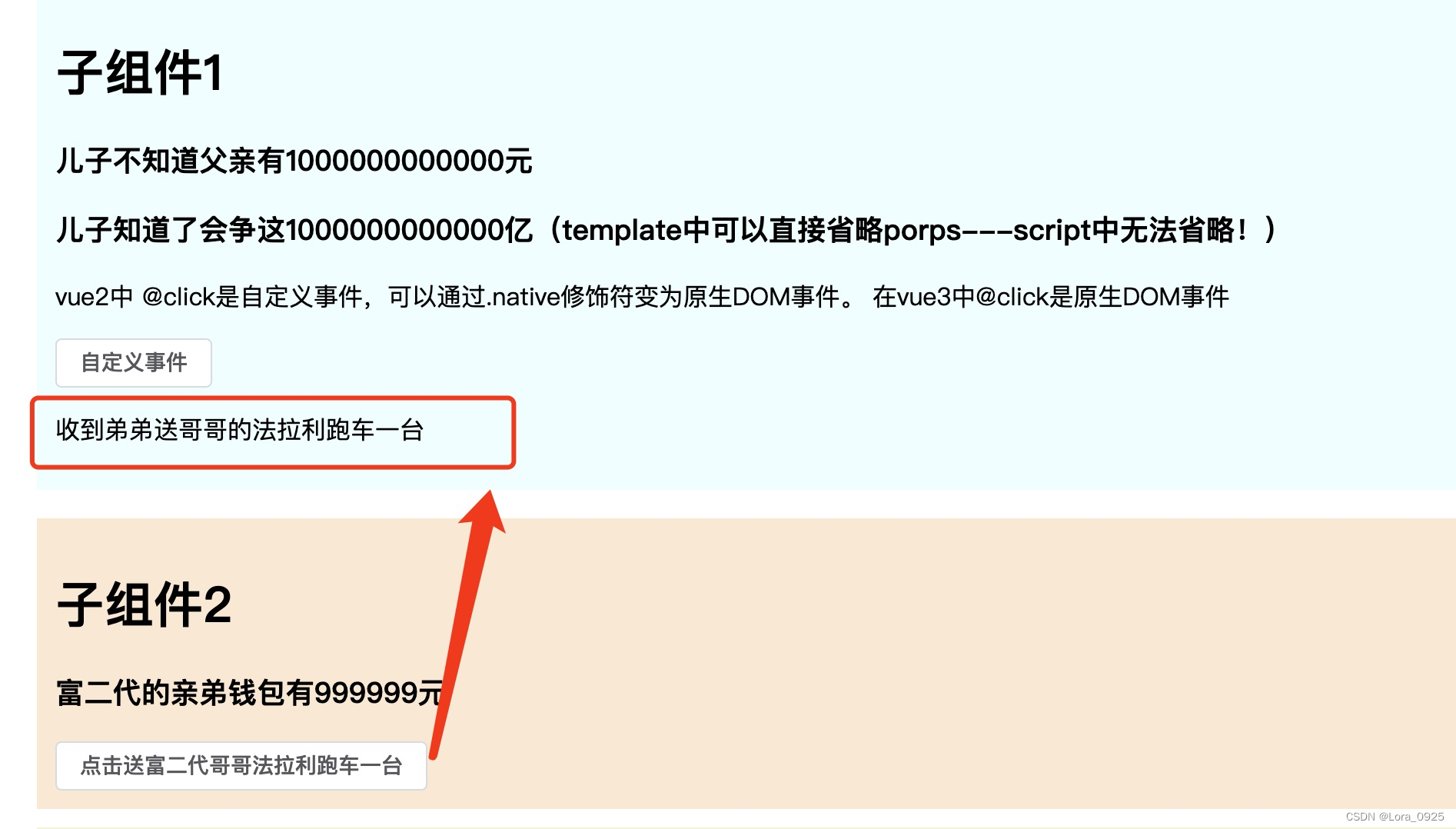
4.v-model传值
在vue2中v-model绑定了一个value值,和input事件,并且只能绑定一个v-model。
而在vue3中给子组件传递一个porps,并且绑定了一个自定义事件。
此处有两种用法,方法一
porps + @update:money 代表自定义事件。代码如下:
父组件代码:
<template>
<div id="app">
<h1>父组件</h1>
<!-- porps @update:money代表自定义事件,也可以换成其他名字 -->
<!-- v-model
1.相当于子子组件传递props[modelValue]
2.相当于给子组件绑定了自定义事件update:modelValue
-->
<index3 :modelValue="money" @update:modelValue="handleMoney"></index3>
<h3>父亲60大寿三妹送出价值{{ money3 }}元礼品</h3>
</div>
</template>
<script lang="ts" setup>
import index3 from './view/index3.vue'
import { ref } from 'vue'
// 接收子组件传递的数据
let money3 = ref(666666)
const handleMoney = (value: number) => {
console.log('接收改变的值:' + value)
money3.value = value
}
</script>
<style scoped>
#app {
width: 100vw;
height: 100vh;
color: #000;
padding: 50px;
box-sizing: border-box;
}
</style>子组件
<template>
<div class="index3">
<h1>子组件3</h1>
<h3>父亲送给三妹 {{ modelValue }}元</h3>
<el-button @click="send">点击送出</el-button>
</div>
</template>
<script setup lang="ts">
// v-module :收集表单数据,数据双向绑定,组件之间的通信去实现父子数据同步业务
defineProps(['modelValue'])
let $emit = defineEmits(['update:modelValue'])
const send = () => {
$emit('update:modelValue', 9999)
}
</script>
<style lang="scss" scoped>
.index3 {
background-color: beige;
padding: 12px;
}
</style>

方法二
1.相当于给子组件传递一个porps[modelValue]=666666 (一定叫modelValue)
2.相当于给子组件绑定了一个自定义事件,事件名一定是 update:modelValue,父组件不用自己写自定义事件
父组件代码
<template>
<div id="app">
<h1>父组件</h1>
<!-- v-model使用情况:1.相当于给子组件传递一个porps[modelValue]=100000 (一定叫modelValue)
2.相当于给子组件绑定了一个自定义事件,事件名一定是 update:modelValue
与vue2的v-model的区别在于,vue2的v-model绑定了一个value值,和input事件,👎 vue2中只能绑定一个v-model,而vue3 可以绑定多个v-model
-->
<index3 v-model="money3" v-model:name="name" v-model:age="age"></index3>
<h3>父亲60大寿三妹送出价值{{ money3 }}元礼品</h3>
</div>
</template>
<script lang="ts" setup>
import index3 from './view/index3.vue'
import { ref } from 'vue'
let money3 = ref(666666)
let name = ref('嘉达')
let age = ref(20)
</script>
<style scoped>
#app {
width: 100vw;
height: 100vh;
color: #000;
padding: 50px;
box-sizing: border-box;
}
</style>子组件:
注意:以v-model="money3"的形式传递时,使用defineProps 接收名字只能叫modelValue,默认写法。
传多个值时,父组件 以v-model:参数名="参数名" 形式传递,defineProps 接收名字就是参数名。
更改数据使用defineEmits,默认方式更改值 事件名字只能叫 “update:modelValue”,
更改指定名字的值时 事件名字 是 “update:参数名”
<template>
<div class="index3">
<h1>子组件3</h1>
<h3>父亲送给三妹 {{ modelValue }}元</h3>
<h3>名字:{{ name }}</h3>
<h3>年龄:{{ age }}</h3>
<el-button @click="send">点击送出</el-button>
<el-button @click="changeName">点击更改名字和年龄</el-button>
</div>
</template>
<script setup lang="ts">
// v-module :收集表单数据,数据双向绑定,组件之间的通信去实现父子数据同步业务
defineProps(['modelValue', 'name', 'age'])
let $emit = defineEmits(['update:modelValue', 'update:name', 'update:age'])
const send = () => {
$emit('update:modelValue', 9999)
}
const changeName = () => {
$emit('update:name', '翠花')
$emit('update:age', 18)
}
</script>
<style lang="scss" scoped>
.index3 {
background-color: beige;
padding: 12px;
}
</style>

5. useAttrs:获取组件标签身上属性与事件
父组件
<template>
<div id="app">
<h1>父组件</h1>
<index4 type="primary" size="large" @click="handlerIndex4"></index4>
</div>
</template>
<script lang="ts" setup>
import index4 from './view/index4.vue'
import { ref } from 'vue'
// useAttrs
let handlerIndex4Value = ref('')
const handlerIndex4 = (value: string) => {
handlerIndex4Value.value = value
}
</script>
<style scoped>
#app {
width: 100vw;
height: 100vh;
color: #000;
padding: 50px;
box-sizing: border-box;
}
</style>子组件:
porps和useAttrs都可以接收来自父组件传递过来的属性与属性值, 如果同时用porps接收值 ,那么useAttrs方法就无法再次获取,porps优先级高与useAttrs。 useAttr同时可以接收事件
<template>
<div class="index4">
<h1>子组件4</h1>
<el-button type="primary" :="$attrs">
useAttrs通信 :="$attrs"等价于 v-bind:{type:'primary' , size:'large' }
</el-button>
</div>
</template>
<script setup lang="ts">
// 引入useAttrs方法:获取组件标签身上属性与事件
import { useAttrs } from 'vue'
// 此方法会返回一个对象
let $attrs:any = useAttrs()
// console.log($attrs)
// 获取身上的事件
$attrs.onClick('接收事件回调参数')
</script>
<style lang="scss" scoped>
.index4 {
background-color: rgb(240, 177, 246);
padding: 12px;
margin: 12px 0;
}
</style>
示例
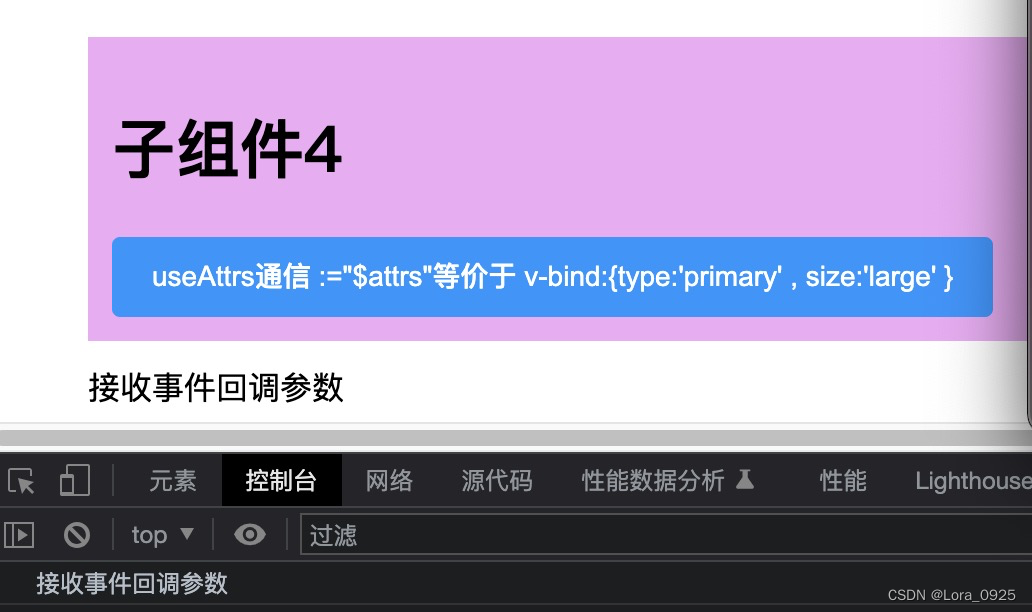
6.$ref/$parent
ref:可以获取真实的DOM节点,可以获取子组件实例的VC
$parent:可以在子组件内部获取到父组件的实例
组件内部的数据对外是关闭的,不能直接访问。需要使用defineExpose对外暴露
<template>
<div id="app">
<h1>父组件</h1>
<el-button @click="borrow" style="margin: 12px 0">
父亲找5儿子借1元
</el-button>
<h3>父亲资产{{ money }}元</h3>
<index5 ref="son5"></index5>
</div>
</template>
<script lang="ts" setup>
import index5 from './view/index5.vue'
import { ref } from 'vue'
let money = ref(1000000000000)
// $ref
let son5 = ref() //此处必须与组件绑定的ref名字相同
// 借钱方法=> 父亲找儿子借钱,儿子的钱变少,父亲的钱变多 使用$ref 获取子组件数据
const borrow = () => {
money.value++
// 获取数据
son5.value.money--
// 随后5儿子买包送人 --调用方法
son5.value.buy()
}
defineExpose({ money })
</script>
<style scoped>
#app {
width: 100vw;
height: 100vh;
color: #000;
padding: 50px;
box-sizing: border-box;
}
</style>子组件
<template>
<div class="index5">
<h1>子组件5</h1>
<h3>ref:可以获取真实的DOM节点,可以获取子组件实例的VC</h3>
<h3>$parent:可以在子组件内部获取到父组件的实例</h3>
<h3>儿子剩余{{ money }}元</h3>
<el-button @click="borrowMoney($parent)">
投资买楼资金不足,找爸爸要90000000(点击按钮注入$parent)
</el-button>
</div>
</template>
<script setup lang="ts">
import { ref } from 'vue'
let money = ref(88888888)
// 买包
const buy = () => {
money.value = money.value - 15862
}
// 找老爸要钱
const borrowMoney = ($parent: any) => {
console.log($parent)
// 获取父组件数据
$parent.money = $parent.money - 90000000
money.value = money.value + 90000000
}
// 组件内部的数据对外是关闭的,不能直接访问。需要使用defineExpose对外暴露
defineExpose({ money, buy })
</script>
<style lang="scss" scoped>
.index5 {
background-color: rgb(226, 226, 226);
padding: 12px;
}
</style>
示例

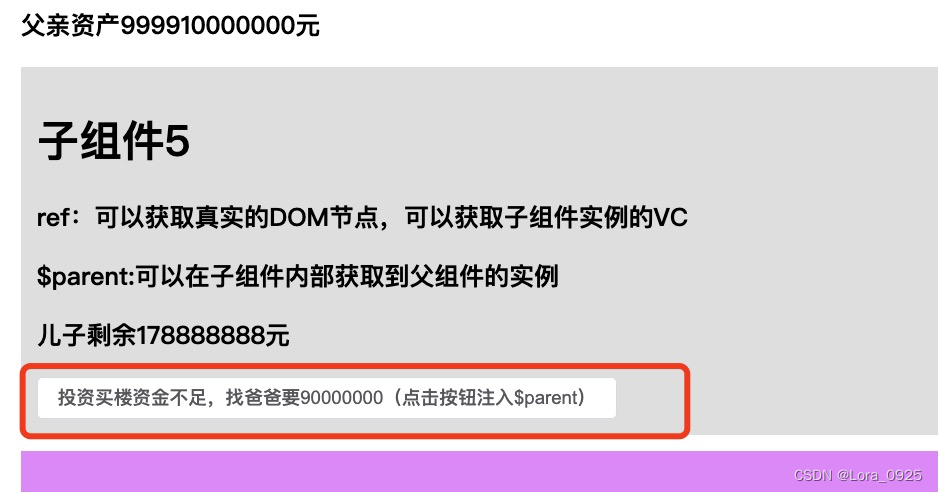
7.provide/inject
1. vue3提供 provide (提供)与 inject (注入),事件隔辈组件数据传递。
2. 父组件提供数据(provide)需要两个参数:
第一个参数就是提供数据的key
第二个参数是提供的数据
3. 注入祖先组件提供的数据:提供的key
4. inject获取的数据是指向同一个对象,可以进行修改
<template>
<div id="app">
<h1>父组件</h1>
<index6></index6>
</div>
</template>
<script lang="ts" setup>
import index6 from './view/index6.vue'
import { provide } from 'vue'
// provide与inject
provide('gold', 5678)
</script>
<style scoped>
#app {
width: 100vw;
height: 100vh;
color: #000;
padding: 50px;
box-sizing: border-box;
}
</style>子组件
<template>
<div class="index6">
<h1>子组件6</h1>
<index6_1></index6_1>
</div>
</template>
<script setup lang="ts">
import index6_1 from './index6_1.vue'
</script>
<style lang="scss" scoped>
.index6 {
background-color: rgb(234, 139, 255);
padding: 12px;
margin: 12px 0;
}
</style>
孙子组件
<template>
<div class="index6_1">
<h2>孙子组件</h2>
<h3>收到爷爷送的黄金{{ gold }}g</h3>
</div>
</template>
<script setup lang="ts">
import { inject } from 'vue'
let gold = inject('gold')
console.log(gold)
</script>
<style lang="scss" scoped>
.index6_1 {
background-color: rgb(233, 229, 114);
padding: 12px;
}
</style>
示例
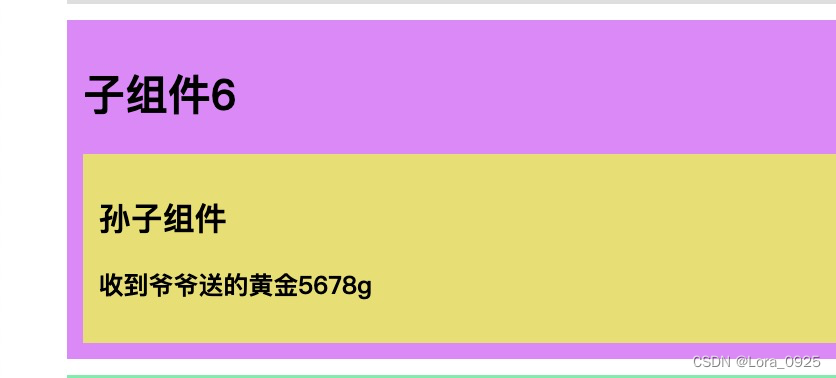
8.pinia :vuex:集中管理状态容器,可以实现任意组件之间的通信
Pinia | Pinia官网
核心概念 state mutations actions getters modules
pinia 核心概念 state actions getters
pinia分为两种写法,选择式api 写法=>类似与vuex 和组合式api写法
8.1.安装
yarn add pinia
# 或者使用 npm
npm install pinia8.2.新建store文件夹,如下,分为两个模块讲解 选择式api写法 与 组合式api写法

8.3.index.ts
// 创建大仓库 index.ts
import { createPinia } from 'pinia'
// createPinia
let store =createPinia();
// 对外暴露
export default store8.4.main.js : 引入 "./store"
import { createApp } from 'vue'
import App from "@/App.vue"
import "@/assets/style/common.scss"
import store from "./store"
const app = createApp(App)
app.use(store)
app.mount('#app')
8.5.user.ts 选择式api写法
// 定义user仓库 选择式api写法 user.ts
import { defineStore } from "pinia";
// defineStore传入两个参数 第一个是小仓库的名字,第二个是小仓库配置对象。
// defineStore方法执行会返回一个函数,函数作用就是让组件可以获取到仓库的数据
let userStore = defineStore("user", {
// 存储数据:state
state: () => {
return {
name: "梅赛德斯",
arr: [12, 234, 23434, 34534]
}
},
actions: {
// 注意函数没有context上下文对象,没有commit 没有mutation去修改数据
// 此处使用this就是小仓库对象--- 此处不能使用箭头函数
updateName(value: string) {
this.name = value
}
},
getters: {
totalMoney() {
let M: any = this.arr.reduce((prev: number, next: number) => {
return prev + next
}, 0)
return M
}
}
})
export default userStore8.6.info.ts 组合式api写法
// 定义info仓库 组合式api写法 info.ts
import { defineStore } from "pinia";
import { ref, computed } from "vue"
let infoStore = defineStore("info", () => {
// 此处的箭头函数务必返回一个对象,属性与方法提供给组件使用
// 主要用到了vue3中的组合式API函数
let num = ref(34233)
const updateNum = (value: number) => {
num.value = value
}
// 使用计算属性
const newNum = computed(() => {
return num.value * 1000
})
return {
num,
newNum,
updateNum
}
})
export default infoStore使用:
<template>
<div class="index7">
<h1>子组件7</h1>
<h3>名字:{{ userInfo.name }}</h3>
<h3>{{ userInfo.totalMoney }}</h3>
<h4>组合式api:{{ info.num }}</h4>
<h4>组合式api使用计算属性:{{ info.newNum }}</h4>
<el-button @click="changeName">点击改名字</el-button>
<el-button @click="changeInfo">点击改num</el-button>
</div>
</template>
<script setup lang="ts">
import userStore from '@/store/modules/user'
import infoStore from '@/store/modules/info'
// vuex:集中管理状态容器,可以实现任意组件之间的通信
// 核心概念 state mutations actions getters modules
// pinia 核心概念 state actions getters
// pinia分为两种写法,选择式api 写法=>类似与vuex 和组合式api写法
let userInfo = userStore()
const changeName = () => {
userInfo.updateName('库里南')
}
// 获取
let info = infoStore()
console.log(info)
const changeInfo = () => {
info.updateNum(77777)
}
</script>
<style lang="scss" scoped>
.index7 {
background-color: rgb(115, 244, 175);
padding: 12px;
margin: 12px 0;
}
</style>示例

9.slot 插槽分为默认插槽、具名插槽、作用域插槽(可以传递数据的插槽,子组件可以将数据回传给父组件的插槽)
9.1 默认插槽 -父组件
<template>
<div id="app">
<h1>父组件</h1>
<index8 >
<div>1.我是默认插槽</div>
</index8>
</div>
</template>
<script lang="ts" setup>
import index8 from './view/index8.vue'
</script>
子组件
<template>
<div class="index8">
<h1>子组件8</h1>
<!-- 默认插槽 -->
<slot></slot>
</div>
</template>
<script setup lang="ts">
</script>
</style>

9.2 具名插槽 -父组件
<template>
<div id="app">
<h1>父组件</h1>
<index8 >
<template v-slot:lora>
<div> 我是具名插槽数据lora</div>
</template>
<!-- 具名插槽可简化为# -->
<template #Marry>
<div> 我是具名插槽数据Marry</div>
</template>
</index8>
</div>
</template>
<script lang="ts" setup>
import index8 from './view/index8.vue'
</script>
子组件
<template>
<div class="index8">
<h1>子组件8</h1>
<!-- 默认插槽 -->
<slot name="lora"></slot>
<p>-------</p>
<slot name="Marry"></slot>
<p>-------</p>
</div>
</template>
<script setup lang="ts">
</script>
</style>
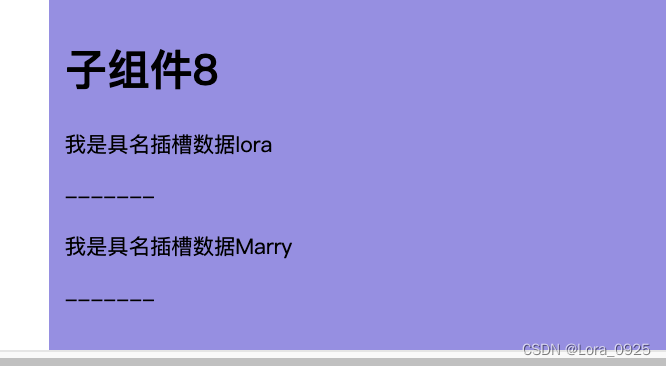
9.3 作用域插槽 -父组件
<template>
<div id="app">
<h1>父组件</h1>
<index8 :slotList="slotList">
<template v-slot="{ $row, $index }">
<span>
{{ $row.type === 1 ? $row.name : $row.lable }}
index:{{ $index }}
</span>
</template>
</index8>
</div>
</template>
<script lang="ts" setup>
import index8 from './view/index8.vue'
let slotList = [
{
id: 1,
lable: '欧坤',
name: '欧坤name',
type: 1,
},
{
id: 2,
lable: '欧坤东方',
type: 0,
},
{
id: 4,
lable: '欧坤西南',
type: 0,
},
]
</script>
子组件
<template>
<div class="index8">
<h1>子组件8</h1>
<div>
<div v-for="(item, index) in slotList" :key="item.id">
<slot :$row="item" :$index="index"></slot>
</div>
</div>
</div>
</template>
<script setup lang="ts">
defineProps(['slotList'])
</script>
</style>
示例
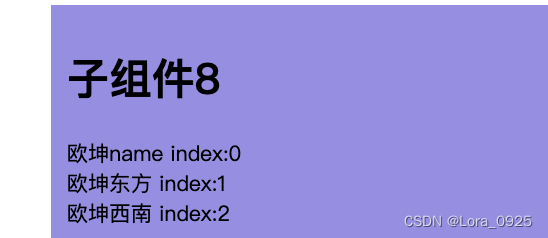
以上是总结的所有通信方式

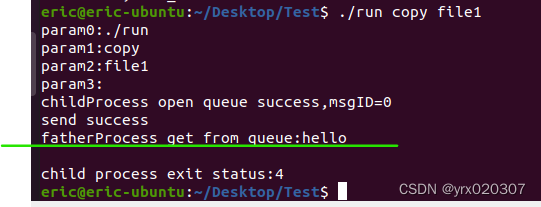
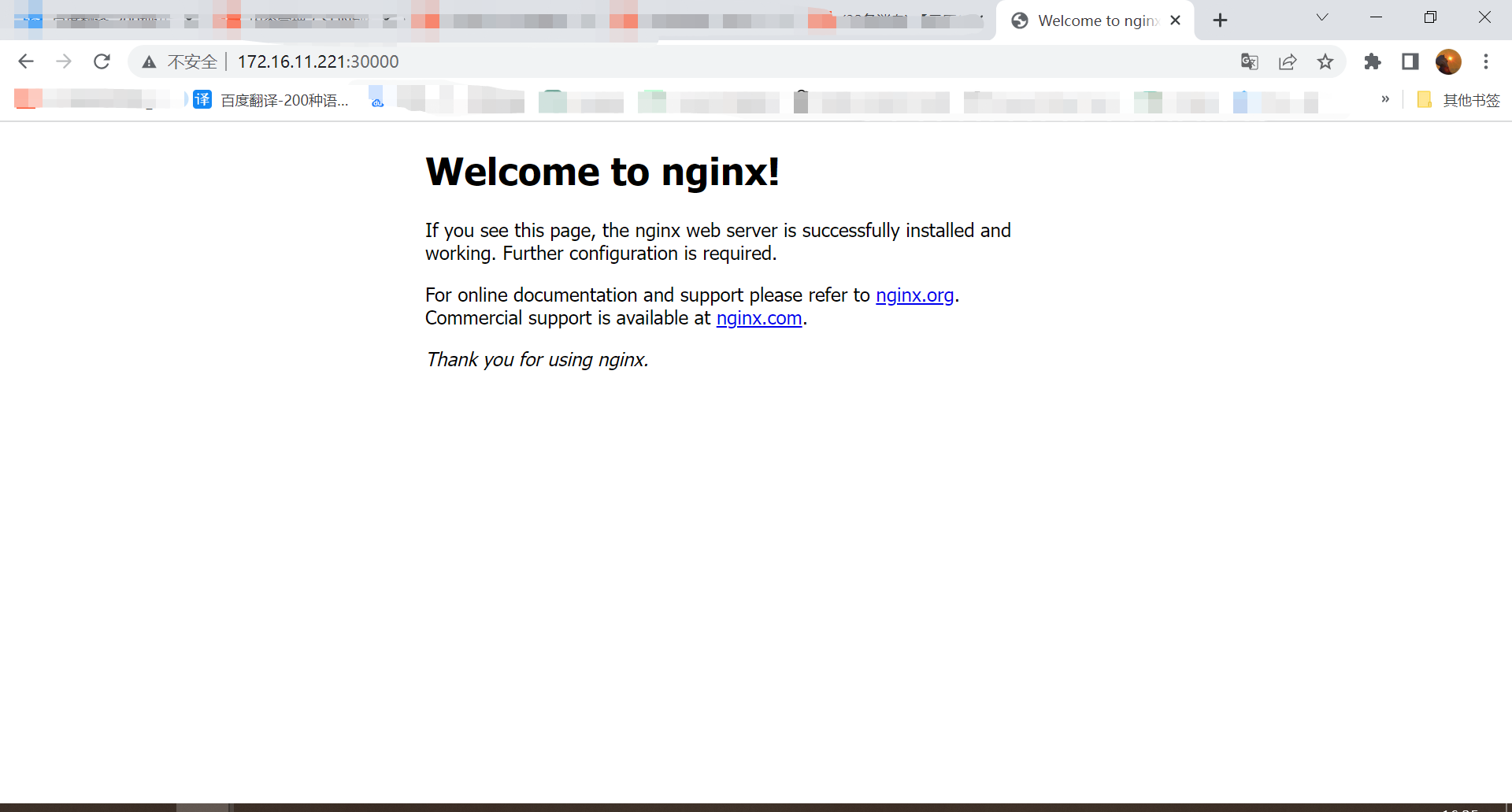


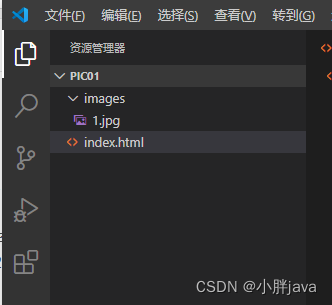
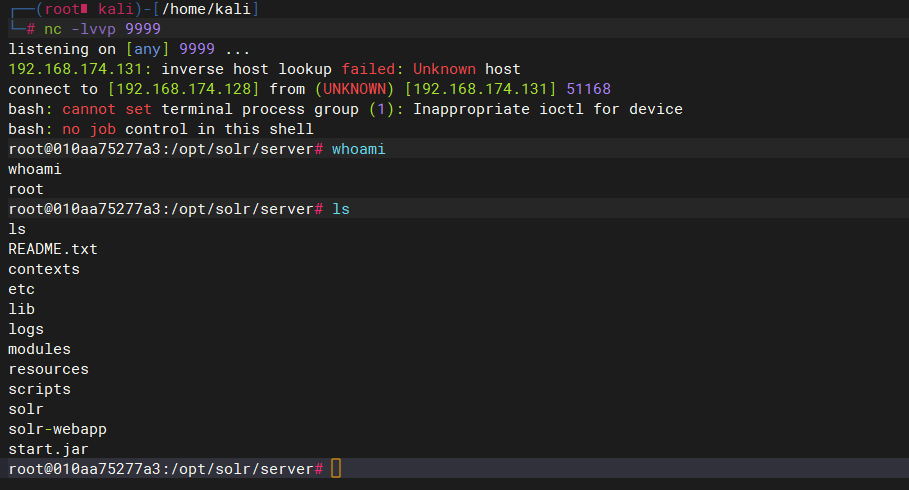
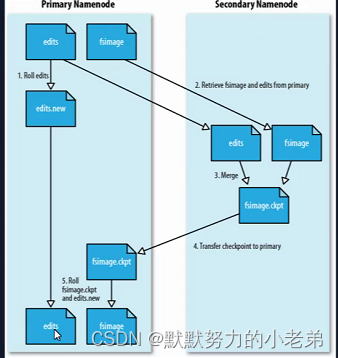

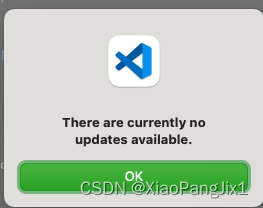

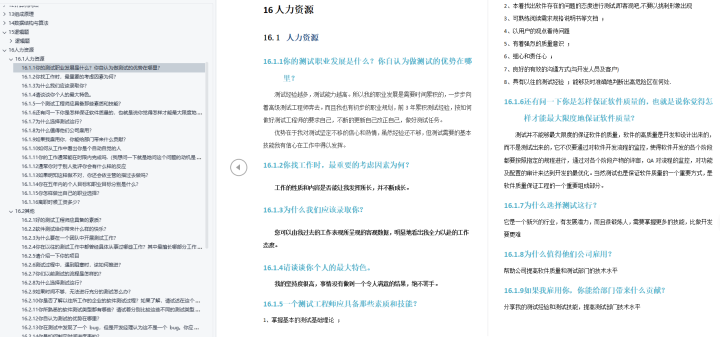
![基于OpenCV [c++]——形态学操作(分析和应用)](https://img-blog.csdnimg.cn/c00451600d5d46f2b5005b409ad64b74.png)
